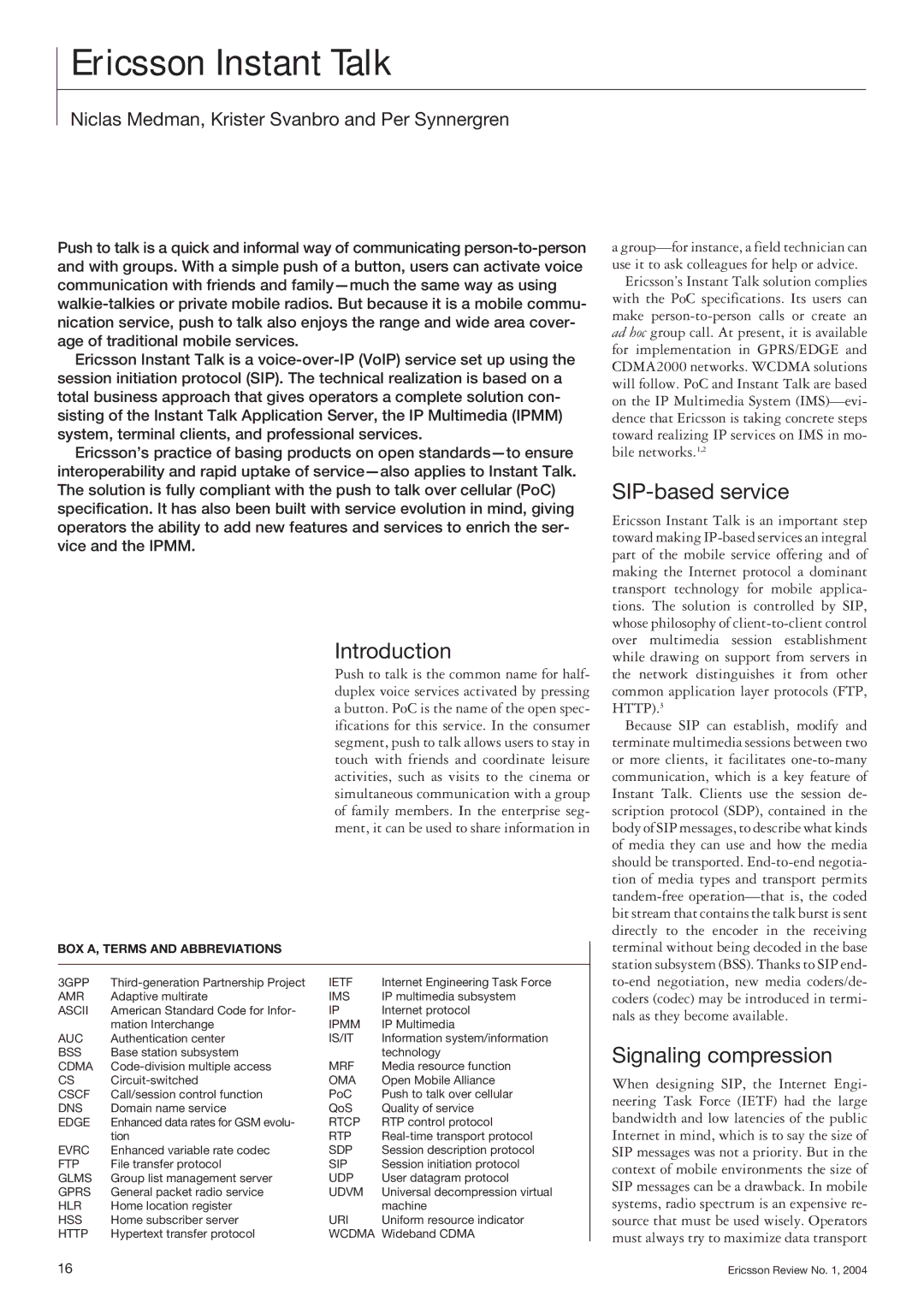
Ericsson Instant Talk
Niclas Medman, Krister Svanbro and Per Synnergren
Push to talk is a quick and informal way of communicating
Ericsson Instant Talk is a
EricssonÕs practice of basing products on open standardsÑto ensure interoperability and rapid uptake of serviceÑalso applies to Instant Talk. The solution is fully compliant with the push to talk over cellular (PoC) specification. It has also been built with service evolution in mind, giving operators the ability to add new features and services to enrich the ser- vice and the IPMM.
Introduction
Push to talk is the common name for half- duplex voice services activated by pressing a button. PoC is the name of the open spec- ifications for this service. In the consumer segment, push to talk allows users to stay in touch with friends and coordinate leisure activities, such as visits to the cinema or simultaneous communication with a group of family members. In the enterprise seg- ment, it can be used to share information in
BOX A, TERMS AND ABBREVIATIONS
3GPP | IETF | Internet Engineering Task Force | |
AMR | Adaptive multirate | IMS | IP multimedia subsystem |
ASCII | American Standard Code for Infor- | IP | Internet protocol |
| mation Interchange | IPMM | IP Multimedia |
AUC | Authentication center | IS/IT | Information system/information |
BSS | Base station subsystem |
| technology |
CDMA | MRF | Media resource function | |
CS | OMA | Open Mobile Alliance | |
CSCF | Call/session control function | PoC | Push to talk over cellular |
DNS | Domain name service | QoS | Quality of service |
EDGE | Enhanced data rates for GSM evolu- | RTCP | RTP control protocol |
| tion | RTP | |
EVRC | Enhanced variable rate codec | SDP | Session description protocol |
FTP | File transfer protocol | SIP | Session initiation protocol |
GLMS | Group list management server | UDP | User datagram protocol |
GPRS | General packet radio service | UDVM | Universal decompression virtual |
HLR | Home location register |
| machine |
HSS | Home subscriber server | URI | Uniform resource indicator |
HTTP | Hypertext transfer protocol | WCDMA | Wideband CDMA |
a groupÑfor instance, a field technician can use it to ask colleagues for help or advice.
EricssonÕs Instant Talk solution complies with the PoC specifications. Its users can make
SIP-based service
Ericsson Instant Talk is an important step toward making
Because SIP can establish, modify and terminate multimedia sessions between two or more clients, it facilitates
Signaling compression
When designing SIP, the Internet Engi- neering Task Force (IETF) had the large bandwidth and low latencies of the public Internet in mind, which is to say the size of SIP messages was not a priority. But in the context of mobile environments the size of SIP messages can be a drawback. In mobile systems, radio spectrum is an expensive re- source that must be used wisely. Operators must always try to maximize data transport
16 | Ericsson Review No. 1, 2004 |
